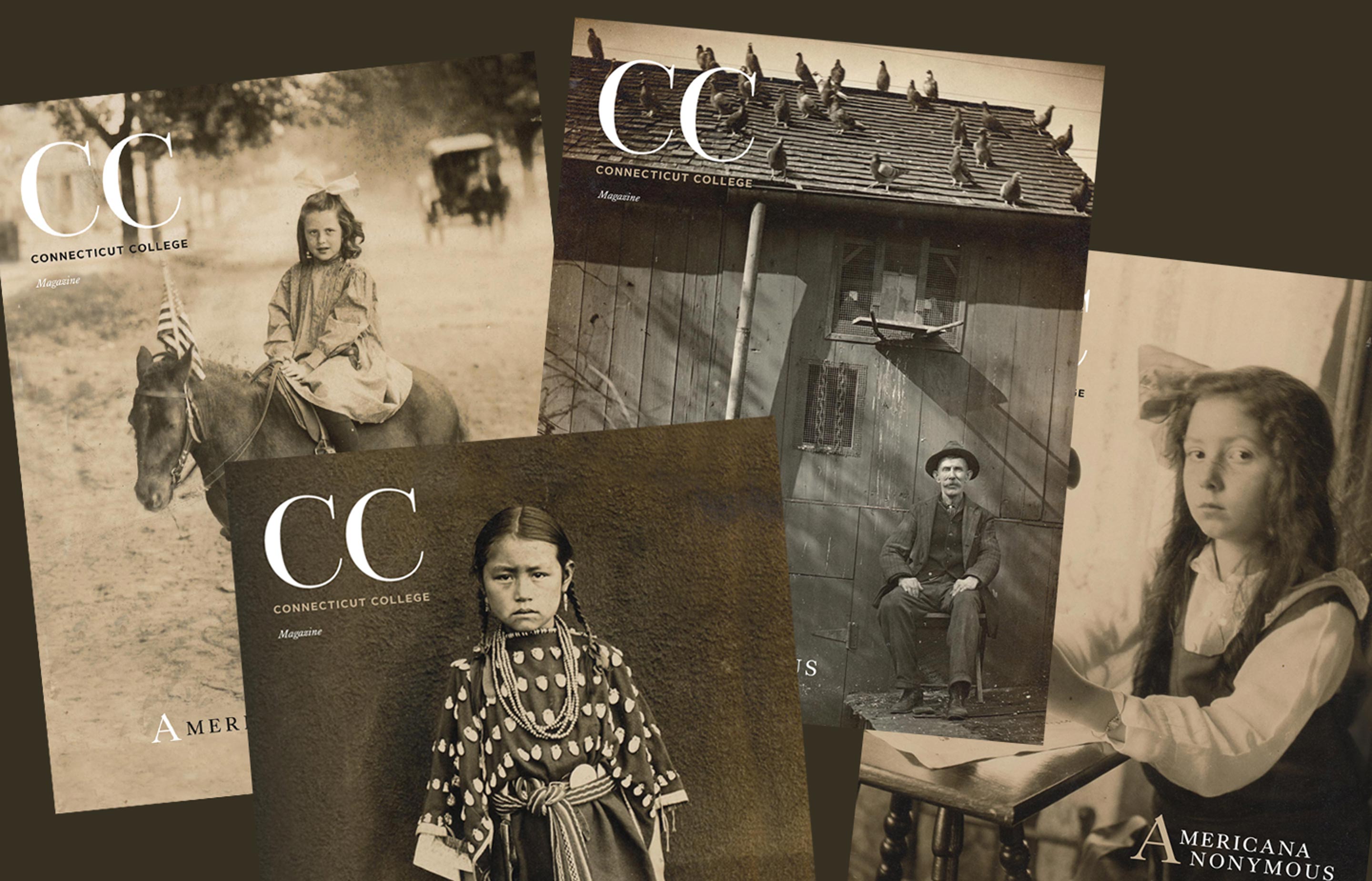Four Covers
The story behind our covers for this issue.
Our goal for every CC Magazine cover is to entice our readers to open the book. We want each recipient to flip through it, feel the pages and find the stories that catch their eye. To accomplish that goal, we look for striking images and headlines that will draw readers into wanting to know more.
We rarely decide on a cover story at the outset of putting together an issue; rather, we let the process play out and let the art speak to us. We were first enchanted by the early 1900s photographs of everyday working-class Americans when they were on display in Shain Library, as part of an exhibition curated by students with the help of their professor, Christopher Steiner, and the two inaugural Krane Art History Guest Residents, Natalie M. Curley, a social historian and collector of vintage amateur photography, and Lucy Sante, an award-winning author and chronicler of early 20th-century America. Senior Writer Melissa Johnson wrote a story about the class and the exhibition for Conn’s website, and we decided to expand it into a magazine feature story by adapting the essays from the exhibition catalog.
It was common for these images, taken by traveling or amateur photographers, to be printed on postcards that could be mailed to friends and family. As CC Magazine Art Director Benjamin Parent began mocking up a few different options for the cover, we had an idea: Playing off of the postcard concept, what if we ran four different covers?
(A special thank you to Professor Steiner, who scanned all four images in high resolution for us on very short notice.)
In her lecture on campus in November, Sante spoke about the children who had their pictures taken for the very first time. “When you were very small, you didn’t quite believe that photography was real. And in return, photography didn’t really believe you were real either,” she said. We thought that sentiment was perfectly captured on the faces of two of our cover subjects, “Girl in traditional Northern Plains elk-tooth dress” and “Girl with Western Electric candlestick telephone.”
In her catalog essay, Curley writes that “for a few cents, the subject could pose (usually outside for lack of indoor lighting) with perhaps even a few quickly gathered possessions to create a make-do studio. … In these images exists a duality, what the sitter crafted for their own persona and the reality of their meager circumstances bleeding through the edges.” This, to me, perfectly captures the feel of “Man posing in front of a homing pigeon coop.” (Look closely, and you’ll see he’s actually sitting on a chair on the roof of yet another structure!)
These traveling or amateur photographers sometimes assembled pop-up studios, and you’ll see some such setups with paper backgrounds or props in the feature story. We can’t know for sure, but I imagine “Girl on pony with American flag posing on a dirt road” waited in line before being hoisted into the saddle to smile (if hesitantly) toward the camera. How many children had their portraits taken with the pony that day? While this image was taken in 1910, there exists a similar portrait of 4-year-old me, taken on picture day at my preschool in San Diego, California, in the 1980s. Like “Girl on pony,” I had my hair done and smiled hesitantly at the camera while perched atop a pony brought to the school for the express purpose of taking such a portrait—some 70 years later.
Individually, each cover is striking. You want to know more; you want, as Sante said, “the novel that accompanies [the image], the memoir, the text of the life that leads up to this moment, and away from it again.”
Together, they help tell the story of “Americana Anonymous.”
— Amy Martin, Editor, CC Magazine

